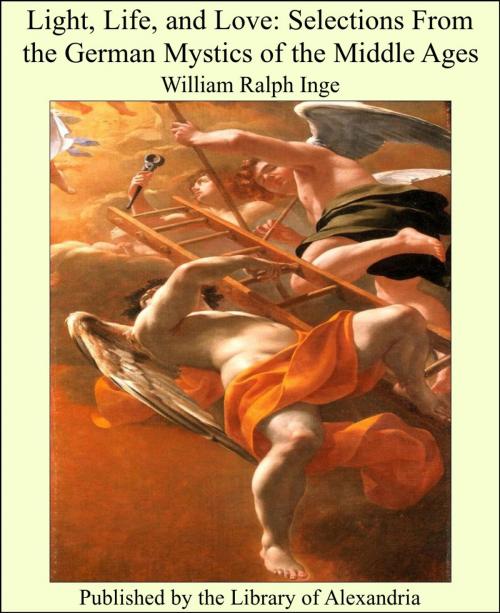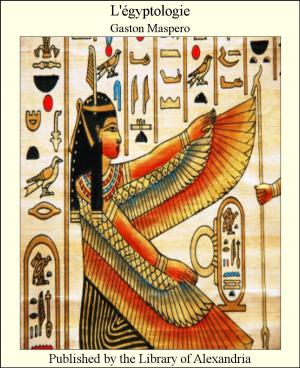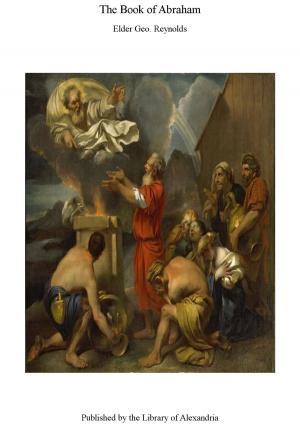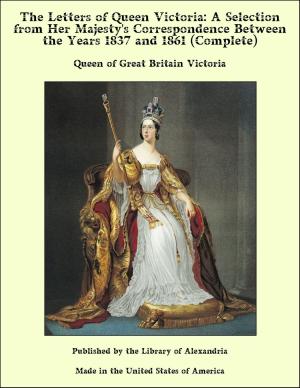Light, Life, and Love: Selections From the German Mystics of the Middle Ages
Nonfiction, Religion & Spirituality, New Age, History, Fiction & Literature| Author: | William Ralph Inge | ISBN: | 9781465540911 |
| Publisher: | Library of Alexandria | Publication: | March 8, 2015 |
| Imprint: | Language: | English |
| Author: | William Ralph Inge |
| ISBN: | 9781465540911 |
| Publisher: | Library of Alexandria |
| Publication: | March 8, 2015 |
| Imprint: | |
| Language: | English |
THE PRECURSORS OF THE GERMAN MYSTICS TO most English readers the "Imitation of Christ" is the representative of mediaeval German mysticism. In reality, however, this beautiful little treatise belongs to a period when that movement had nearly spent itself. Thomas a Kempis, as Dr. Bigg has said,[1] was only a semi-mystic. He tones down the most characteristic doctrines of Eckhart, who is the great original thinker of the German mystical school, and seems in some ways to revert to an earlier type of devotional literature. The "Imitation" may perhaps be described as an idealised picture of monastic piety, drawn at a time when the life of the cloister no longer filled a place of unchallenged usefulness in the social order of Europe. To find German mysticism at its strongest we must go back a full hundred years, and to understand its growth we must retrace our steps as far as the great awakening of the thirteenth century—the age of chivalry in religion—the age of St. Louis, of Francis and Dominic, of Bonaventura and Thomas Aquinas. It was a vast revival, bearing fruit in a new ardour of pity and charity, as well as in a healthy freedom of thought. The Church, in recognising the new charitable orders of Francis and Dominic, and the Christianised Aristotelianism of the schoolmen, retained the loyalty and profited by the zeal of the more sober reformers, but was unable to prevent the diffusion of an independent critical spirit, in part provoked and justified by real abuses. Discontent was aroused, not only by the worldiness of the hierarchy, whose greed and luxurious living were felt to be scandalous, but by the widespread economic distress which prevailed over Western Europe at this period. The crusades periodically swept off a large proportion of the able-bodied men, of whom the majority never returned to their homes, and this helped to swell the number of indigent women, who, having no male protectors, were obliged to beg their bread. The better class of these female mendicants soon formed themselves into uncloistered charitable Orders, who were not forbidden to marry, and who devoted themselves chiefly to the care of the sick. These Beguines and the corresponding male associations of Beghards became very numerous in Germany. Their religious views were of a definite type. Theirs was an intensely inward religion, based on the longing of the soul for immediate access to God. The more educated among them tended to embrace a vague idealistic Pantheism. Mechthild of Magdeburg (1212-1277), prophetess, poetess, Church reformer, quietist, was the ablest of the Beguines. Her writings prove to us that the technical terminology of German mysticism was in use before Eckhart,[2] and also that the followers of what the "Theologia Germanica" calls the False Light, who aspired to absorption in the Godhead, and despised the imitation of the incarnate Christ, were already throwing discredit on the movement. Mechthild's independence, and her unsparing denunciations of corruption in high places, brought her into conflict with the secular clergy. They tried to burn her books—those religious love songs which had already endeared her to German popular sentiment. It was then that she seemed to hear a voice saying to her: Lieb' meine, betrbe dich nicht zu sehr, Die Wahrheit mag niemand verbrennen
THE PRECURSORS OF THE GERMAN MYSTICS TO most English readers the "Imitation of Christ" is the representative of mediaeval German mysticism. In reality, however, this beautiful little treatise belongs to a period when that movement had nearly spent itself. Thomas a Kempis, as Dr. Bigg has said,[1] was only a semi-mystic. He tones down the most characteristic doctrines of Eckhart, who is the great original thinker of the German mystical school, and seems in some ways to revert to an earlier type of devotional literature. The "Imitation" may perhaps be described as an idealised picture of monastic piety, drawn at a time when the life of the cloister no longer filled a place of unchallenged usefulness in the social order of Europe. To find German mysticism at its strongest we must go back a full hundred years, and to understand its growth we must retrace our steps as far as the great awakening of the thirteenth century—the age of chivalry in religion—the age of St. Louis, of Francis and Dominic, of Bonaventura and Thomas Aquinas. It was a vast revival, bearing fruit in a new ardour of pity and charity, as well as in a healthy freedom of thought. The Church, in recognising the new charitable orders of Francis and Dominic, and the Christianised Aristotelianism of the schoolmen, retained the loyalty and profited by the zeal of the more sober reformers, but was unable to prevent the diffusion of an independent critical spirit, in part provoked and justified by real abuses. Discontent was aroused, not only by the worldiness of the hierarchy, whose greed and luxurious living were felt to be scandalous, but by the widespread economic distress which prevailed over Western Europe at this period. The crusades periodically swept off a large proportion of the able-bodied men, of whom the majority never returned to their homes, and this helped to swell the number of indigent women, who, having no male protectors, were obliged to beg their bread. The better class of these female mendicants soon formed themselves into uncloistered charitable Orders, who were not forbidden to marry, and who devoted themselves chiefly to the care of the sick. These Beguines and the corresponding male associations of Beghards became very numerous in Germany. Their religious views were of a definite type. Theirs was an intensely inward religion, based on the longing of the soul for immediate access to God. The more educated among them tended to embrace a vague idealistic Pantheism. Mechthild of Magdeburg (1212-1277), prophetess, poetess, Church reformer, quietist, was the ablest of the Beguines. Her writings prove to us that the technical terminology of German mysticism was in use before Eckhart,[2] and also that the followers of what the "Theologia Germanica" calls the False Light, who aspired to absorption in the Godhead, and despised the imitation of the incarnate Christ, were already throwing discredit on the movement. Mechthild's independence, and her unsparing denunciations of corruption in high places, brought her into conflict with the secular clergy. They tried to burn her books—those religious love songs which had already endeared her to German popular sentiment. It was then that she seemed to hear a voice saying to her: Lieb' meine, betrbe dich nicht zu sehr, Die Wahrheit mag niemand verbrennen















